By Matt O’Keefe
For years there’s been the complaint that comics aren’t for kids anymore. I say that comic shops aren’t (necessarily) for kids anymore. While a lot of what you find in your LCS isn’t geared towards children, there are still a number of avenues where all-ages comics can gain traction. Here are nine of them.
1. The Direct Market
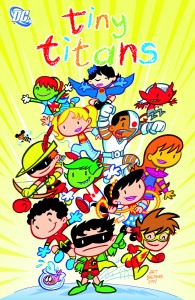
Even though most kids haven’t stepped foot into a comic shop, they’re still a big way that comics get into their hands. The best comic book evangelists for children are undoubtedly their parents, the ones paying for their entertainment in the first place. Parents who are comics fans themselves have every incentive to get their children invested in the hobby, which is probably why Tiny Titans, a comic that was popular with readers of all ages, was able to last 50 issues, longer than the majority of kids comics fare.
2. The Supermarket
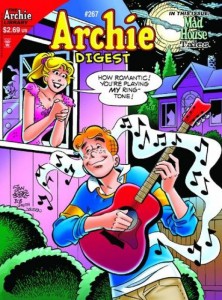
As much success as Archie Comics has had lately in periodicals, the bulk of its sales still come from the digests people find in the checkout line. Comichron reported that Archie sold well over 2 million digests in 2013. That’s no small number, especially in an industry where the #1 book of the month generally tops out at around 150,000 copies.
3. Toy Stores
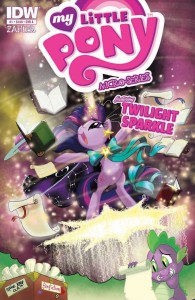
Stores that sell toys have recently become opportunities to sell kids comics. IDW has made great strides by offering mini comics as micro-fun packs. A fan of My Little Pony at the right Toys R’ Us, Target or Walmart has an extra chance to be exposed to comics. Because of the success from that brand, IDW even expanded to offering TMNT micro-fun packs in January.
4. The Web
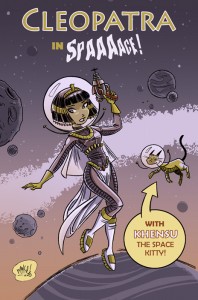
Webcomics are a pretty obvious way for kids to be exposed to the medium, only requiring an internet connection as opposed to a car ride to the LCS. While it’s been notoriously hard for creators to make money off of webcomics, things are starting to turn around. Patreon is gaining traction as a way for creators to receive a regular income (The Beat has one!) and kids comics have the kinds of advocators who would be likely to consider pledging. Kids are also perhaps more likely to be excited by memorabilia (such as t-shirts) that serves as supplemental income for webcomic creators.
5. Kickstarter
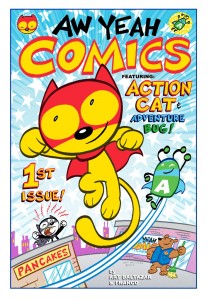
Kickstarter and other crowdfunding sites are accessible ways for creators to sell their comics to kids. Kickstarter and company have built up a large following that’s regularly browsing campaigns they might want to support. Kids probably aren’t browsing Kickstarter, but through the crowdfunder the parents who make the purchasing decisions are given an extra chance to be exposed to comics. It’s been shown that Kickstarters for comics find more success when the comics have had exposure elsewhere. To cite previous successes, Aw Yeah Comics benefited from Art Baltazar and Franco’s audience in the direct market, and Lilith Dark was previously a popular webcomic.
6. Bookstores
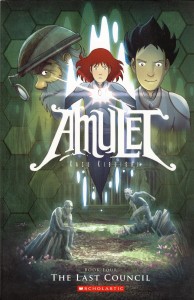
Major children’s book publisher Scholastic’s GRAPHIX imprint is opening the doors to all-ages comics by releasing critically-acclaimed books such as BONE, Amulet, Smile, and Missile Mouse. Imprints like GRAPHIX are near-impossible to break into, but those who do get a book published by them reap a lot of rewards.
7. Book Conventions
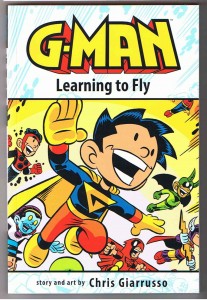
The American Library Association just opened up a spot for an Artist Alley in 2011, so the market is still ripe for conventions that are mostly attended by librarians and book fans. Libraries are often an afterthought in the comic book industry, but librarians are always looking for new stories that will reach kids. Chris Giarruso, the cartoonist behind G-Man and Mini Marvels, said on the Kids Comics Revolution podcast that the ALA Convention was his most important show of the year.
8. School and Library Visits
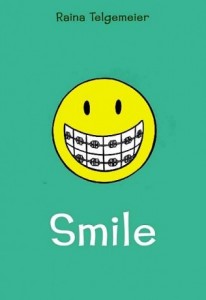
These are hit and miss, but when they hit they really hit. Raina Telgemeier, the writer/artist of Smile, reported on Gregg Schiegel’s podcast Stuff Said that she’s found a lot of success with such events. Not all visits are gearing towards selling books but, even if creators aren’t making extra revenue off sold copies, they’re steering kids towards the comics medium.
9. Activism
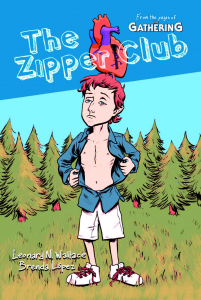
This isn’t necessarily a new outlet to sell comics, but it’s a recently emerging way to gain attention. Maybe the newest form of kids comics marketing that that’s striking a cord with both comic book readers and nonreaders is activism. Comics or graphic novels that raise awareness about certain issues have recently found some success. The Kickstarter for Metaphase, a comic about an invulnerable hero who has a son with Down syndrome, raised almost $10,000. In addition, the Indiegogo-funded The Zipper Club is offering a scholarship to attend a camp for kids with heart defects similar to the one attended by characters in the graphic novel, a particularly clever way to promote kids comics through activism. It demonstrates that there will continue to be new ways to get comics exposed to children.
If you don’t believe comics are for kids anymore, here is a counter to that, showing some of ways they’re still reaching them. This isn’t an article about how to get them into those outlets; that would be a whole series of posts. But, if you’re a creator, maybe this gives you an idea of how or where to sell your all-ages comic. Regardless, it’s nice to think about all the routes that comics still have to reach a younger audience.
Thanks to Michael Lapinski for assisting me with this article.


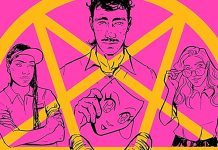
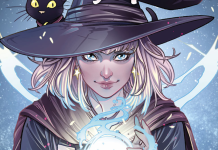



Another outlet that some publishers are taking advantage of is the school book fair. Scholastic has their own line of books, but I’ve seen books from DC, Marvel, and First Second at my daughter’s school. I’m sure there are others, but those are the ones I’ve noticed.
That’s interesting to know. Thanks, Kent.
-Matt
I love all these points especially libraries and webcomics. That’s where kids are going. I think the LCS should be last on the list unfortunately. We have some amazing, modern, family friendly shops we also have a ton of scary dungeon shops full of creepers and questionable things that kids have no business going anywhere near. As a parent, i don’t want my kids going to the comic shop in our area. Its sketchy and pervy…i won’t even go there.
I’d just like to see comics be more a part of the popular culture instead of just sold at adult collectible shops.
I think part of the challenge is in how creators and comics publishers use the term All Ages. This term does not exist in the traditional book market and while I know this causes a bit of head scratching or eye rolling from ‘comics folks’ it really is a huge obstacle to selling your book.
There is no ALL AGES classroom in any school district, there is no ALL AGES section in the library or in a store.
Every book has an ideal audience and it should be presented as such. If the book appeals to the youngest of readers then call it an Early Reader for Kids ages 5+. If it something that appeals to kids in Middle School then call it a Middle Grade or for 9+ Readers.
Young Adult Readers or 13+ applies to kids in Junior High or High School.
And there is a very big opening in the public library and schools market for books like G-Man, Tiny Titans and the rest of these really great books. The comics publisher need to learn this language before the creators get scooped up by Scholastic, Andrews McMeel, Capstone or others who know how to get great comics for kids into the book market.
Um… one correction:
The ALA Summer conference has had an Artist Alley since New Orleans, in 2011 (unofficial, but it was there, testing the waters). Officially, since 2012, with a nearby stage for non-stop panels!
http://ala12.scheduler.ala.org/search/node/comics
In 2010 in DC, there was a comics-specific area and part of the “Pop Top” programming was devoted to comics.
#8.5: Libraries (school, public, academic)
Yes, the local library probably offers comics-specific programming (#8.1: Library-sponsored shows like “Kids Read Comics”). But they also stock lots of titles available for check-out! Does your library not have what you want to read? Ask for it! They’ll probably buy a copy, or borrow it from another library!
As for newsstand sales: 2013: $25 Million.
G-Man has been scooped up… Andrews McMeel is publishing a G-Man diary book. And if you haven’t read Super Pets lately…!
Excellent point about checking books out from the library, Torsten! Until my teenager became a teenager, he gobbled up a lot of their manga. My daughter has found some great books there, as well. They are very good about taking requests, too. We have a great library system in my county!
BLATANT PLUG: If anyone is interested in hearing various people (from cartoonists, teachers, librarians, retailers, parents & kids) talk in depth about the expanding world of comics for young people, may I humbly recommend checking out the KIDS’ COMICS REVOLUTION podcast. :)
https://itunes.apple.com/us/podcast/kids-comics-revolution!/id533692812?mt=2
John, the problem is that if comics are given specific age rating like books, they’ll lose interest from a lot of older customers.
Torsten, thanks for the correction and the additional info!
Dave, it’s a great podcast! One of the big inspirations for doing this article.
-Matt
The age rating is a suggestion to booksellers, educators, and librarians.
Most kids (and parents) don’t even think to check the title page verso for the RL, Lexile, DRA, etc.
I know, having survived FOUR Harry Potter midnight madness parties, that A LOT of HP fans are much older than the suggested seventh grade reading level.
(And if you’re older than 12, you shouldn’t be reading Bone!)
I’m by no means an expert, but I imagine Harry Potter is at some level an exception to the rule. And BONE was already established as a great indy comic when it got published by Scholastic.
-Matt
At the time, HP was a breakthrough. There was a definite demarcation between kids novels and adult novels. That line has blurred a lot recently, especially with the huge surge in popularity of YA novels. Twilight, Hunger Games, etc. are read by many adults. Heck, you can thank this trend for 50 Shades of Gray, which is decidedly adult. Without the adult following that Twilight had, that series wouldn’t have happened. While HP at the time was an exception, it really isn’t as much anymore.
Not sure what the point is you are trying to make about Bone. It was an established indy book, but it wasn’t recognized outside comic circles. In fact, I would argue that it was the adult comic readers in the industry who established it and brought the attention of Scholastic. Scholastic changed that, though. They saw the potential, picked it up, and its popularity skyrocketed. My son knew about it because of me. He was able to pull the hipster card when his friends discovered the book. “I read Bone before it was cool!” :)
Good points, Kent. I wonder how similar the comics readership would be to book readers if it were to take a chance and include those age ratings.
I just meant that the adults who knew BONE wasn’t originally intended as a children’s book would be less likely to disregard the Scholastic version because of the age rating.
-Matt
Great list! Thanks!
Comments are closed.